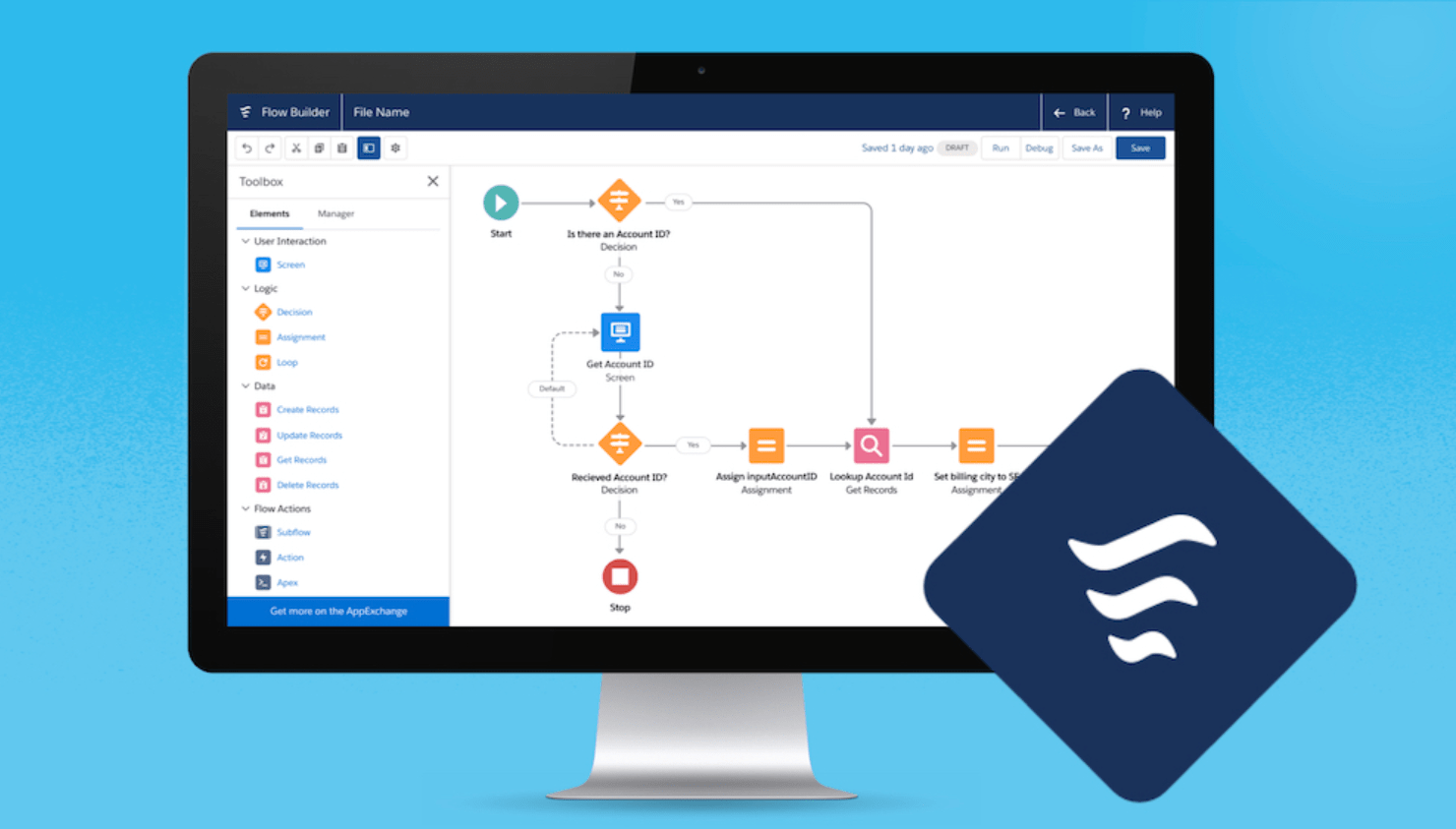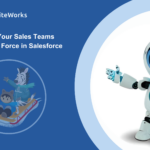Have you heard about Flow? If you are in the field of salesforce, you know this section of salesforce very well. Salesforce Flows is the gem in the administrator and developer’s tool belt. If you are a beginner and don’t know about flows or how to use flows in salesforce. So, Today we are going through every aspect of flows and see:
- Power of Automation
- What is Flow?
- Building Blocks of a Flow Builder
- Types of Flows
- When and Why should I use Flow?
- Why should I not use the flow?
- Flow Builder Tour
- Create a New Flow
- Example of a Flow
- Testing Flows
Power of Automation
Automation tools are very important because they make your work easy. The benefits are you can make your process once and trust that the process is always done just so and saves your users time. Automation tools are declarative, no-code tools that make it more powerful by automating the number of administrative tasks that sales representatives and their managers have to perform manually.
According to your criteria, set up your flow action like if the salesforce opportunity is closed as won, the relevant sales order is automatically created in the system. You can also set up as many criteria as you want in a single flow.
There are many automation tools to automate your business process in salesforce:
- Salesforce Flows
- Workflow
- Approvals
Now, The question arises which tool is best or Which automation tool do I use?
Every automation tool has its pros and cons. The best automation tool for your needs depends on the type of business process that you’re automating.
What is Flow?
Flows is an automation tool used for collecting, processing, and updating information depending on business processes. Flows are a no-code tool but require that you understand some basic programming concepts like variables and how logic works.
It’s better to use declarative, no-code tools and work your way up to code solutions. Since our use case requires conditional logic and actions, the simplest solution that fits our requirement is a flow.
Flow provides two-point and clicks automation tools for every salesforce app:
- Flow Builder
- Process Builder
We are covering Process Builder in our next Blog(Getting Started with Process Builder). This guide will teach you everything you need to know about flows. Let’s dive in!
Building Blocks of a Flow Builder
There are three main building blocks:

Elements: It is used to perform logical actions like assignments, decisions, or loops that the flow can execute.
Connectors: It will tell the flow which element to execute next. It connects the elements and defines the path that the flow takes at run time.
Resources: It is nothing but a variable containing a value that is to be used in a flow. The Manager tab displays the resources that are available in the flow. You can also create as many resources as you want.
Types Of Flows
There are different flow types in Flow Builder. When you create a new flow, you’re prompted to select the type of Flow you wish to create.

When and Why should I use Flow?
- Flows are used to create, read, update and delete records or sets of records.
- Flows are able to work with multiple objects at a time.
- You can iterate through the records in Flows.
Why should I not use the Flow?
- If you are dealing with send email, create tasks, and record updates, those are better to manage with the Process builder or a workflow rule then you don’t have to use Flow Builder. Flows are used for more complicated logic or tasks.
- If you want to create a simple record then you can handle it easily by Process Builder. Don’t use Flow.
Flow Builder Tour
The toolbox contains Elements and resources which we will use to build our flow.

Elements tab – Interaction, Logic, and Data Elements
From Here, You can create new elements and resources in the flow.
Interaction Elements include Action and Subflow. You might find Screen Element inside this in Screen Flow.
Logic Section includes Assignment used to assign a record to a variable, Decision which is like if-else in Apex, Pause work when pause condition is met pause the flow interview, Loop is used to iterate over multiple records, Collection Sort gives us the ability to sort a collection variable in ascending or descending order.
Data Elements include Create, Update, Get, and Delete Records.
Manager Tab
It contains the existing elements and resources of the flow. You can also create resources like Variable, Constant, Formulae, Collection, and Choices.
Create a New Flow
- Go to Setup.
- From Setup, enter Flows in the Quick Find box, and select Flows.

- Click on a New Flow.

- Select the flow according to your business process. I have selected the Screen Flow.

- Now, Click on Freeform.

- You are on the following page. Now, You have created the flows according to your business process.

Example of a Flow
- Redirect a User to a New Record
- Clone a record
- Create New renewal opportunity and Check all associated opportunity line items in the contract and add to the renewal opportunity
Testing Flows
To test the Salesforce flows, input the variables and click debug. Then run through the flow to make sure it works properly.
This feature is very much helpful when you want to check what’s going on in the background. This tool makes it easier to test and troubleshoot your flow.
Conclusion
I think many of the companies work using the same idea if they are in the same business. But there is always another way to do things that may be better from the current idea and accelerate business further. Salesforce Flows can do just that in our field. It is a powerful tool to build complex business solutions easily. The use cases for flow are endless, and its capabilities are growing with every Salesforce release. In shorts, they have made the jobs of Salesforce Administrators easier.
References
Also Read: The Impact of Salesforce consulting firms on improving sales and customer satisfaction
Thank you for taking the time to read our blog. We have great confidence that you have found our ideas and processes to be of great value. If your company is currently in need of Salesforce-related services, we are delighted to offer our expertise. Erudite Works is widely recognized as one of the top Salesforce experts. Our team has extensive experience in offering expert strategies, implementing, and customizing Salesforce CRM to effectively meet your business’s automation and reporting needs. Rest assured, our team holds certifications in all the necessary Salesforce modules, ensuring a seamless CRM solution and the delivery of exceptional consulting services. We invite you to Contact Us to learn more about our services.







0 Comments